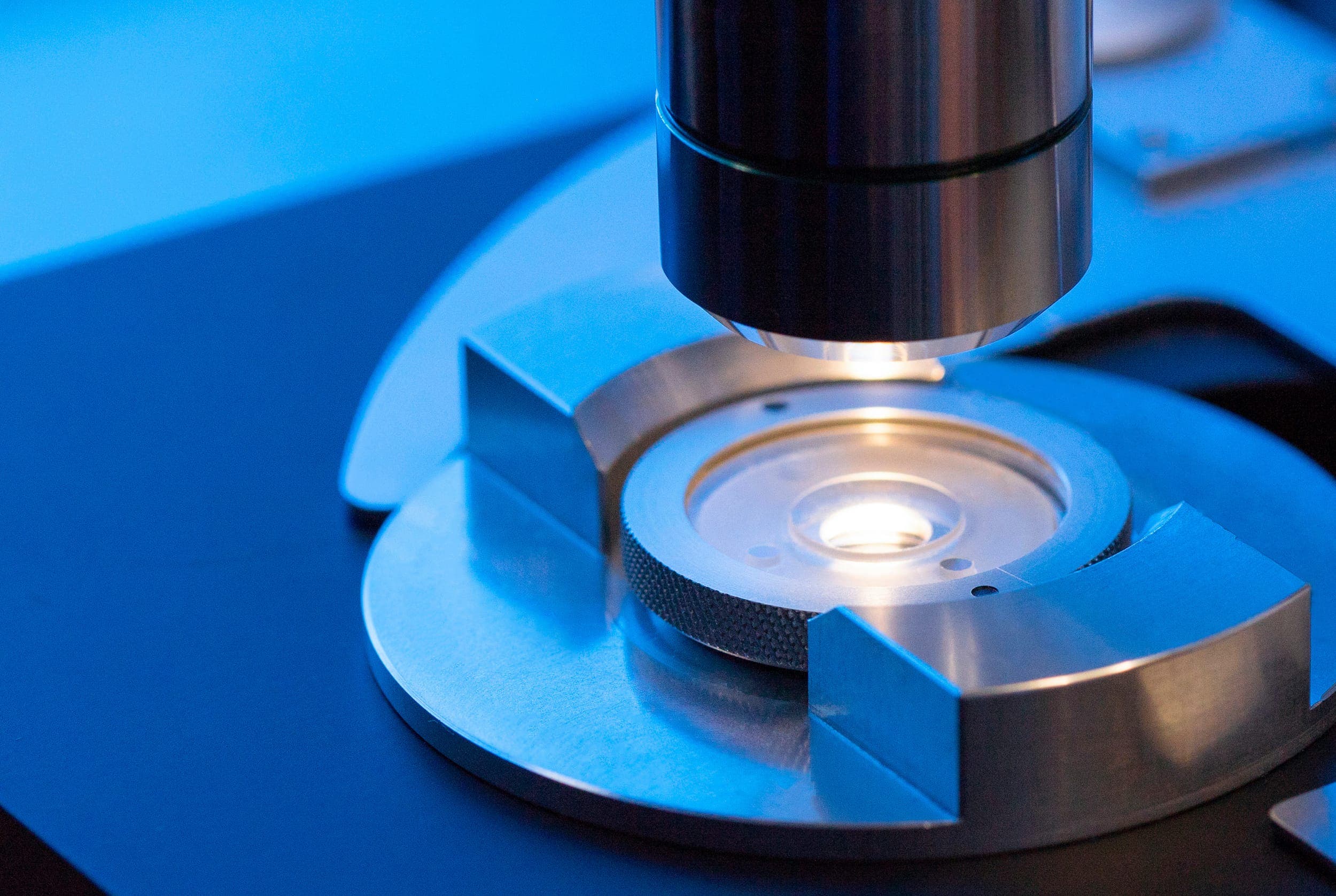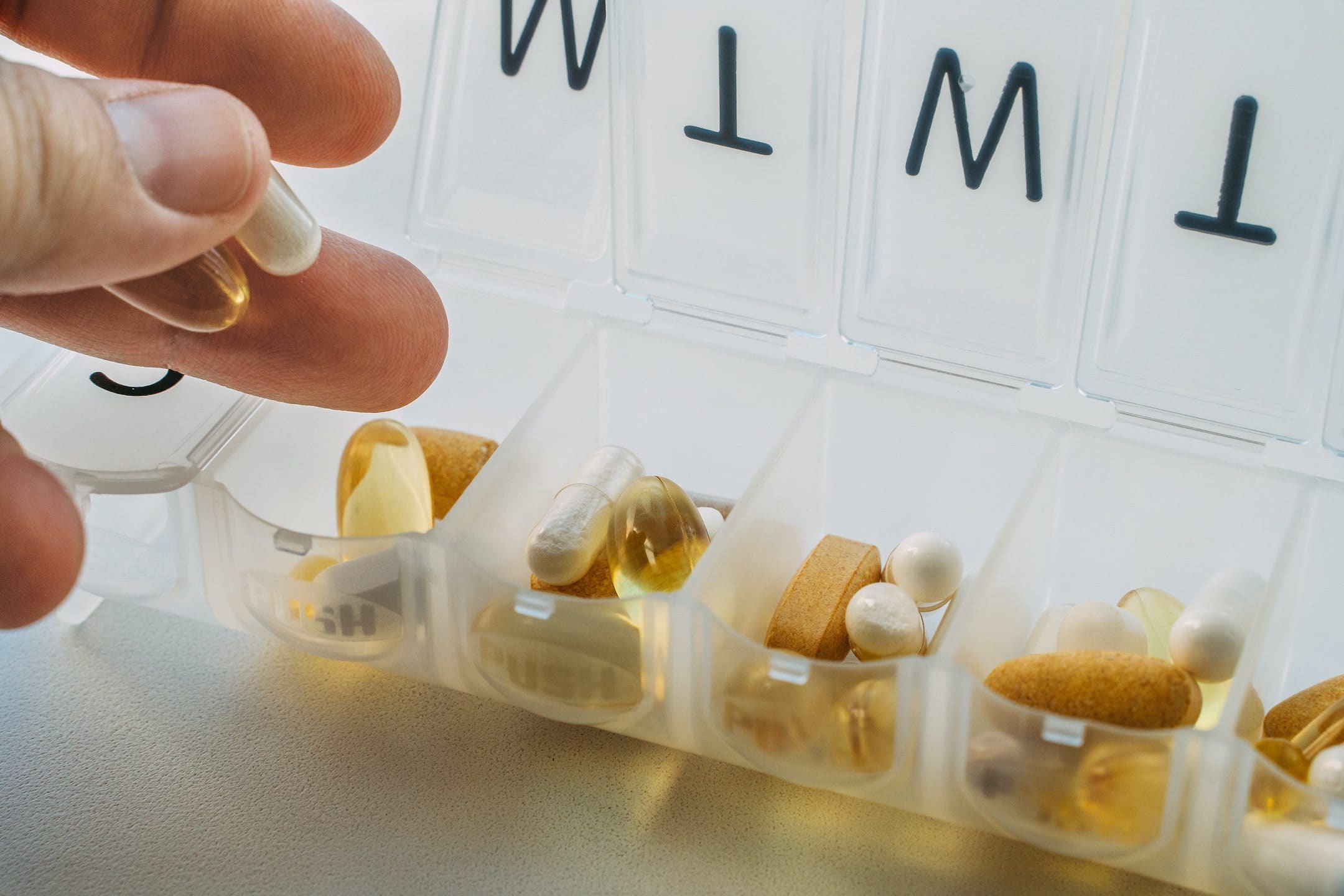There are several reasons why you may decide to have semen analysis. Perhaps you and your partner are having difficulty conceiving. Or maybe you want to proactively assess any sperm health issues. You could even be at the opposite end of your family-building journey, and looking to evaluate the results of a vasectomy.
Whatever the reason for seeking semen analysis, are you prepared for the results? Do you know what a semen analysis report means?
This article will break down the basics of semen analysis and what to do next if your semen analysis results are abnormal.
What is semen analysis?
Sperm is a vital component of male fertility. You need at least some healthy sperm to create a healthy pregnancy via natural conception. To work out if your sperm are healthy, you can have a semen analysis.
Legacy fertility nurse Stephanie Keller explains that a semen analysis is a test used in the evaluation of infertility. Using high magnification, “this test looks at the semen and the microscopic sperm cells contained in it,” says Keller.
The main metrics of a semen analysis are:
- Sperm count and concentration: how many sperm are seen in the sample
- Volume: the amount of ejaculate that the sperm are contained in
- Motility: how the sperm are swimming and moving
- Morphology: the size and shape of the sperm
“The total motile sperm count is a mathematical calculation that factors in the three most important pieces on this report: concentration, volume, and motility,” Keller states. “And, it is a good indicator as to the probability or likelihood of natural conception.”
Semen analysis process
The process of semen analysis is pretty simple. Basically, you need to collect a semen sample in a small cup through masturbation. If this is done in your doctor’s or urologist’s office, it is taken to a laboratory within 60 minutes for analysis.
However, you can do a semen analysis at home. Legacy offers at-home sperm analysis kits that include a transport media that keeps your sperm sample viable for up to 48 hours. The sample is produced at home and shipped overnight to the lab for testing.
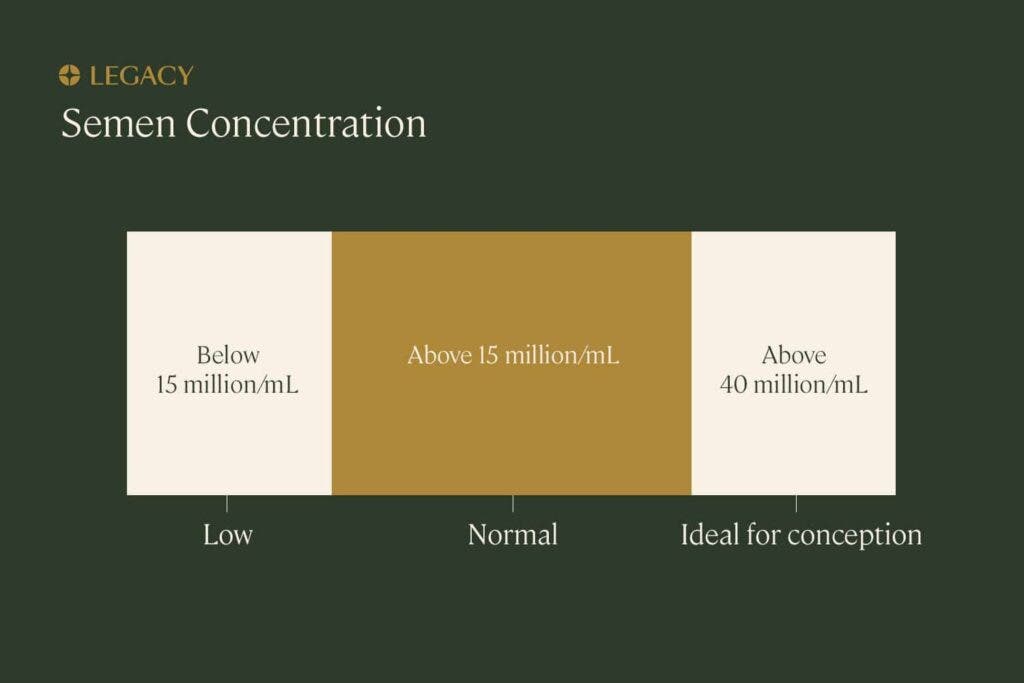
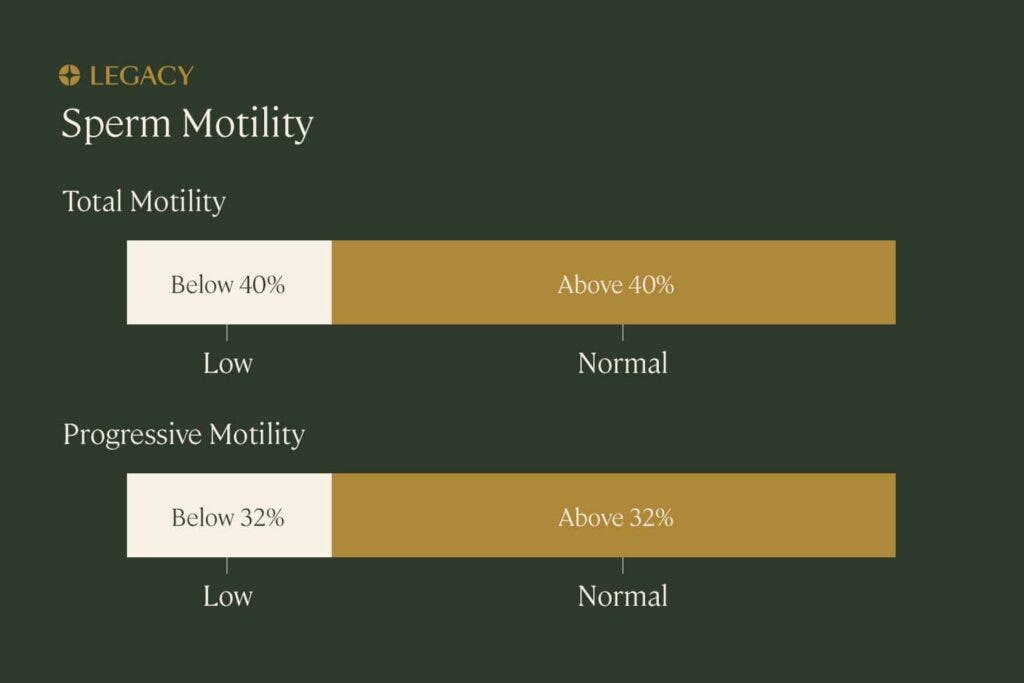
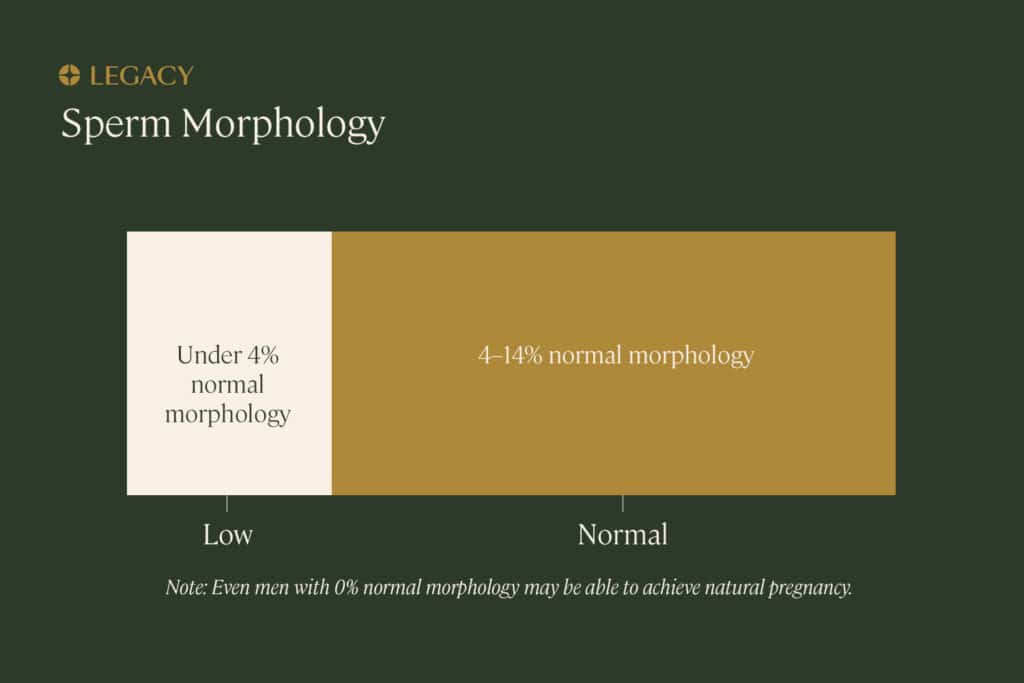
What does an abnormal semen analysis report look like?
Keller advises that the normal reference ranges for the metrics assess during a semen analysis are:
- Concentration count: 15 million per mL or greater
- Volume: 1.5mL or greater
- Motility: 40% or greater
- Morphology: 4% or greater
- Total motile sperm count: 20 million or greater
Your results might come back completely normal. Or, they could highlight a concern such as a low sperm count or abnormal sperm morphology.
You can read in more detail about what the results on a semen analysis report mean in Legacy’s guide to sperm testing.
If I get an abnormal semen analysis result, am I infertile?
You’ll only be diagnosed with infertility if you’ve actually been trying, but unable, to conceive a healthy pregnancy.
Keller says that, when it comes to trying to conceive, “there are no exact values required for natural conception.” She stresses that just because metrics on your semen analysis are outside of the normal range, it does not necessarily mean there is a problem. The process of diagnosing infertility involves much more than just one semen analysis.
Remember, even if you’re diagnosed with infertility, there are now many treatment options to help you have a baby. Finding the cause(s) of your infertility is key to establishing a treatment plan, and semen analysis is part of the assessment.
What should I do after abnormal semen analysis results?
So, you’ve gotten your semen analysis report and the results are “abnormal” — what do you do now?
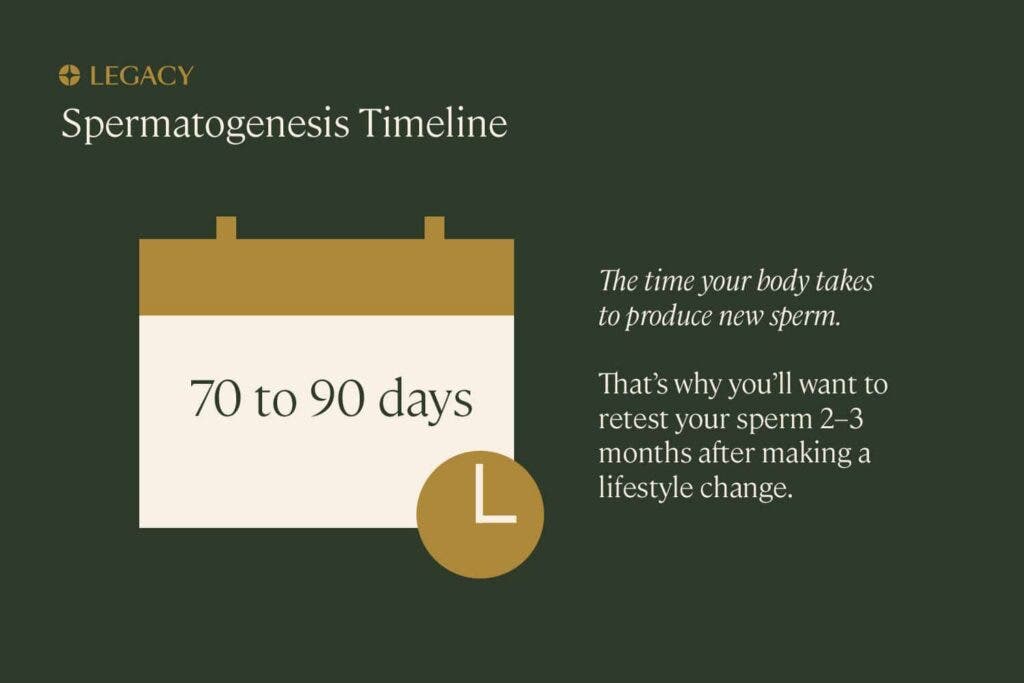
Repeat semen analysis to confirm any abnormal results
Should you do another semen analysis? That depends on why you’re testing in the first place.
Semen analysis results can come back abnormal for several reasons, including:
- A spilled or contaminated sample
- Being unwell or having a fever when taking the sample
- A too-short period of abstinence prior to the test — you must abstain from ejaculation (sex or masturbation) for 2–5 days before producing a sample for analysis
So, if you’ve got the timing wrong, think you may have been unwell, or something else could have affected the results, you might want to get further semen analysis. You can retest again after 2–7 days of abstinence from ejaculation.
You may also want to repeat a semen analysis after you’ve tried to improve your sperm quality with lifestyle changes or medication. Bear in mind there are specific recommendations as to when to test after a vasectomy or after adopting lifestyle changes.
Speak to a specialist, such as a male fertility urologist
“It is important to speak with a professional about your specific results and what can be done to improve upon those results,” advised Keller. Every Legacy semen analysis client has the option to schedule a virtual appointment with one of our fertility specialists to discuss their results. If you did your semen analysis with a fertility clinic, you may need to schedule a follow-up appointment to discuss your results.
There are a couple of different types of specialists you can see if you are concerned about your abnormal semen analysis results:
- A reproductive endocrinologist sees couples who are trying to conceive
- A urologist treats male patients for infertility and sexual health dysfunction
Depending on your personal situation, you may choose to see either specialist. You may even end up consulting with both. Everyone’s care is individual to their needs.
Bring your semen analysis results to your appointment. That way, the fertility specialist can build a complete picture of your health and help you determine the best path forwards.

Make lifestyle improvements to improve sperm
If you’ve received abnormal sperm testing results, there are some lifestyle changes you can make to help improve your sperm health. These include:
- Optimizing your diet: Aim for a diet high in fish, lean poultry, fruits and vegetables, legumes, and whole grains. According to research, the Mediterranean diet has the potential to improve sperm health.
- Increasing how much you exercise: Regular physical activity can lead to better sperm motility and morphology.
- Quitting smoking: Extensive studies have linked smoking to low sperm count and poor morphology.
- Reducing alcohol intake. High alcohol consumption and habitual binge drinking are both associated with decreased sperm health. However, occasional social drinking has no significant impact on sperm health.
You may not be convinced that lifestyle can make a big difference. However, researchers advise that poor diet and lifestyle choices can disrupt the endocrine system and contribute to infertility. If you have your sperm analysis with Legacy, your report will include personalized lifestyle recommendations for improving your sperm health.
“In many cases, simple lifestyle changes and supplements are all that is needed,” said Keller. “But in others, a visit to a urologist for a more in-depth workup may be necessary.”
